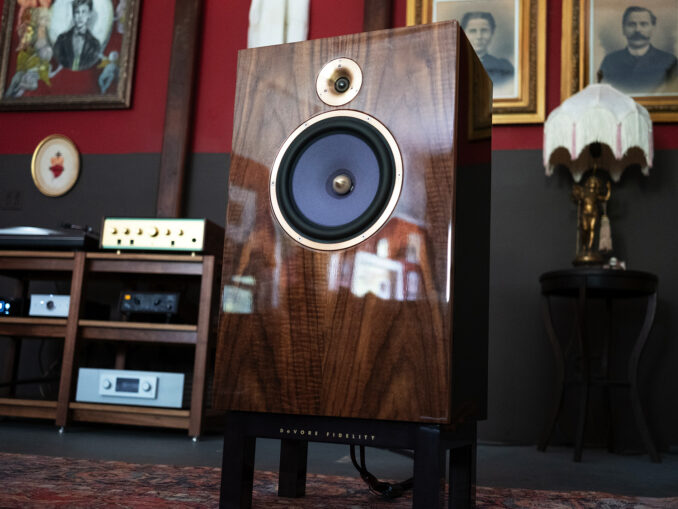
When it comes to hifi and music, distance matters.
And the distance I’m referring to is the one between me and the music in play and different systems, especially different speakers, put the listener closer to, further from, and inside the musical proceedings. My favorite presentation places me intimately close, so close I almost feel as if there’s no barrier between me and the music and this is one area where the DeVore Fidelity O/Bronze excel. By presenting music that sounds and feels alive in air, the experience transcends the ephemeral nature of music by making the passing of time beat to its beat.
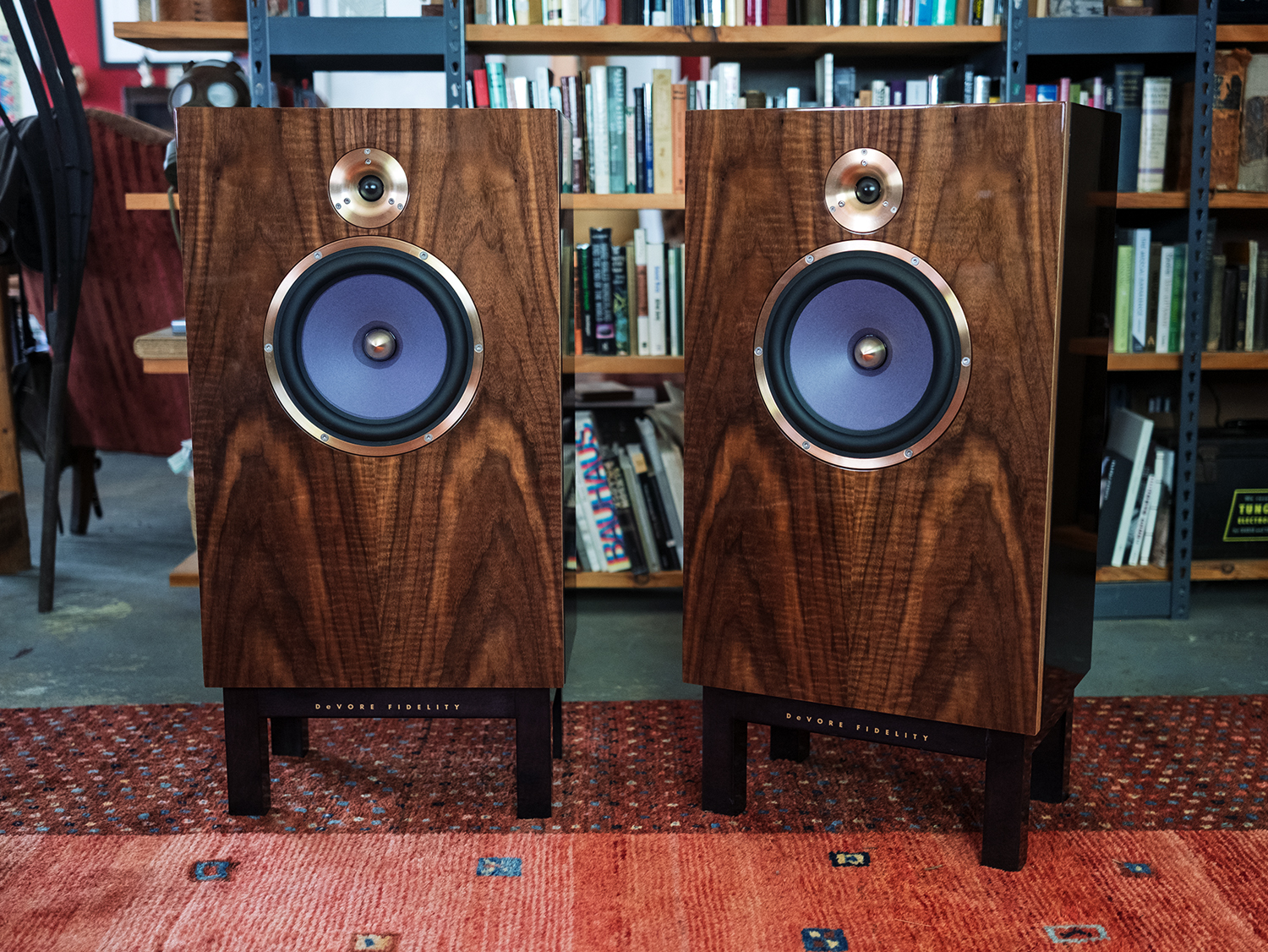
I also want to be startled by the sounds of music, just like in real life, and this is another area where the O/Bronze excel. Take the opening notes jumping off the strings of Justin Vernon’s acoustic guitar on “Speyside” that announce his return as Bon Iver on SABLE, fABLE before veering off in new directions that sound so perfectly real, so incredibly natural in tone, body, and projection that it seems to dive directly into my body before finishing its fade to silence, reverberating in my bones. And this guitar doesn’t jump out from the speakers, rather it sounds like it’s jumping out of the body of the guitar, an important distinction and another card in the O/Bronze’s winning hand.
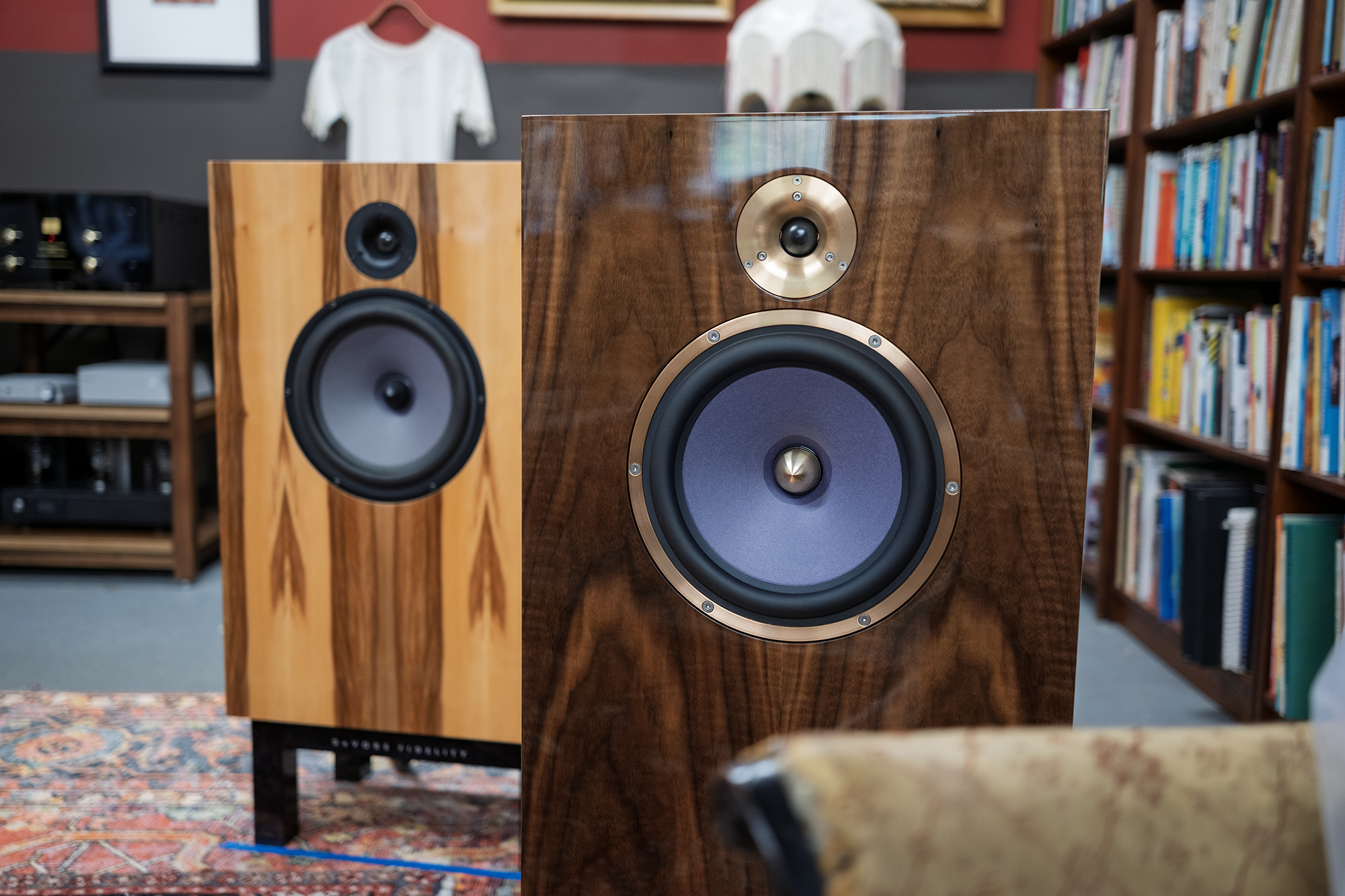
One area where the O/Bronze clearly outshine the DeVore O/96, speakers I’ve owned for years and listen to most days, is bass response. Even though their respective frequency response—26Hz-23kHz for the O/Bronze and 26Hz-22kHz for the O/96 according to the company—is the same on the low side, the O/Bronze clearly sound as if they go a bit deeper by giving more body, weight, and detail to the low end and whatever is responsible for making it. The O/Bronze also outshine the O/96 with greater dynamic energy, greater punch and perceived speed, making music that much more jumpy. That much more alive. The O/Bronze also sound richer and more refined than the O/96 bringing a heightened level of tactile presence to whatever music is in play.
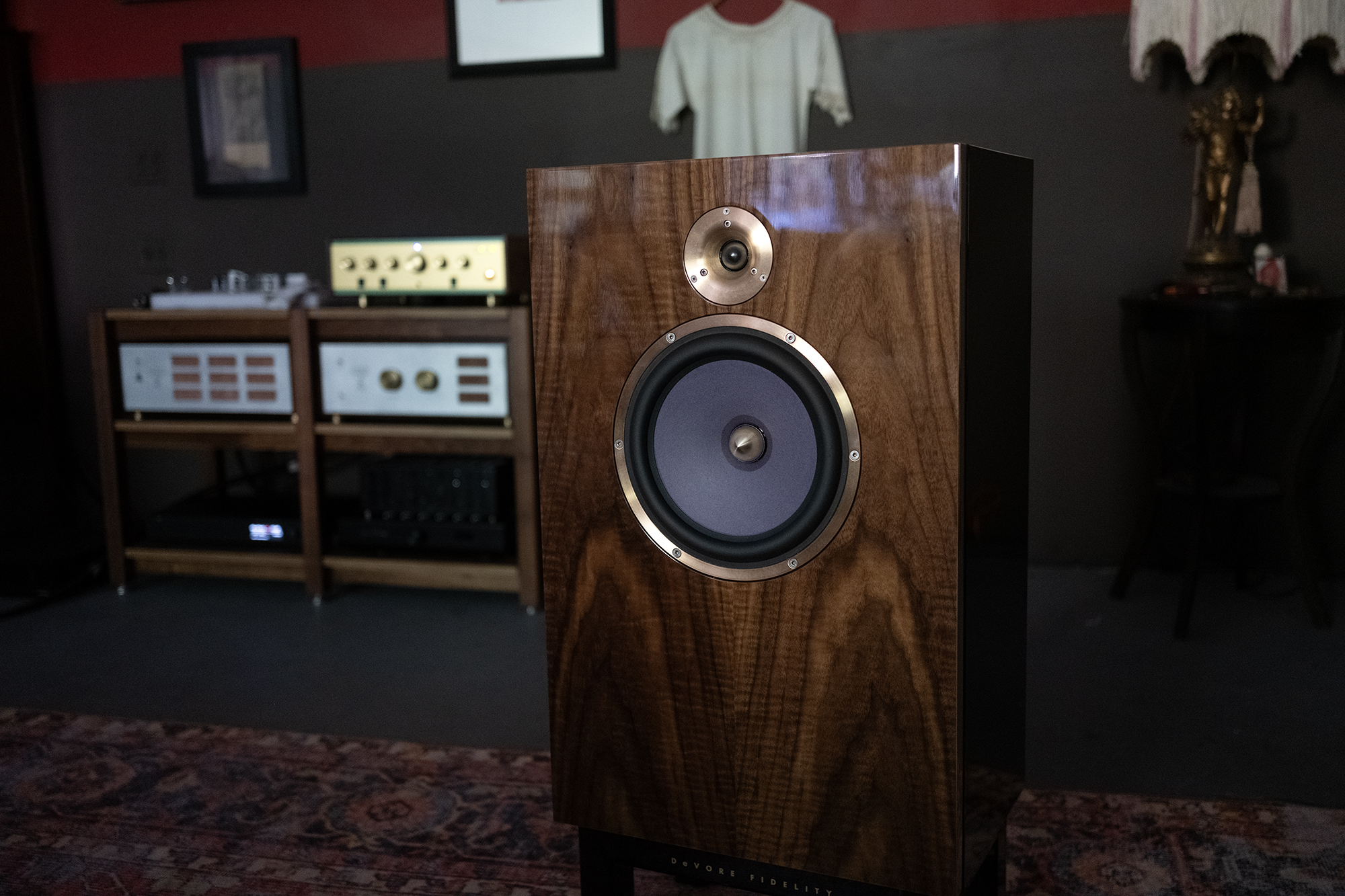
The tweeter in the O/Bronze trickled down from the flagship O/Reference speakers and as is the case with all of the drivers in DeVore Fidelity speakers they are made to designer John DeVore’s specifications.
The 10” paper cone woofers in the O/Bronze are new. From DeVore:
The Orangutan O/Bronze fills the gap between DeVore Fidelity’s award-winning O/96 and our top of the line O/Reference. In a cabinet the same dimensions as the O/96 we use the tweeter from the O/Reference and a new 10″ paper cone woofer. Both drivers use the cast and machined bronze chassis from the O/Reference and deliver a new level of linearity and dynamic coherence for a speaker of this type. The port tubes are also made from bronze and like the O/Reference, they are isolated from the cabinet to minimize the effect of vibrations on the speaker performance.
From a satellite’s eye view, the O/Bronze are a 2-way design comprised of that 1″ silk dome tweeter from the O/Reference and the new 10″ woofer. Cardas binding posts reside underneath. But that’s hardly the whole story as the motor, magnet, and cast machined bronze horn all contribute to the tweeter’s improved performance as compared to the O/96. The woofer uses the same German paper cone as found in the O/96 but that about ends the similarities as the O/Bronze woofer employs a pair of large Faraday rings, one on either end of the magnetic gap, that improves linearity, a copper ring mounted directly to the machined bronze phase plug that acts as a heat sink which decreases thermal compression (a good thing), and the chassis and rear ports are cast from the same bronze alloy improving stability while decreasing resonance as compared to the zinc chassis used in the O/96. All according to DeVore.
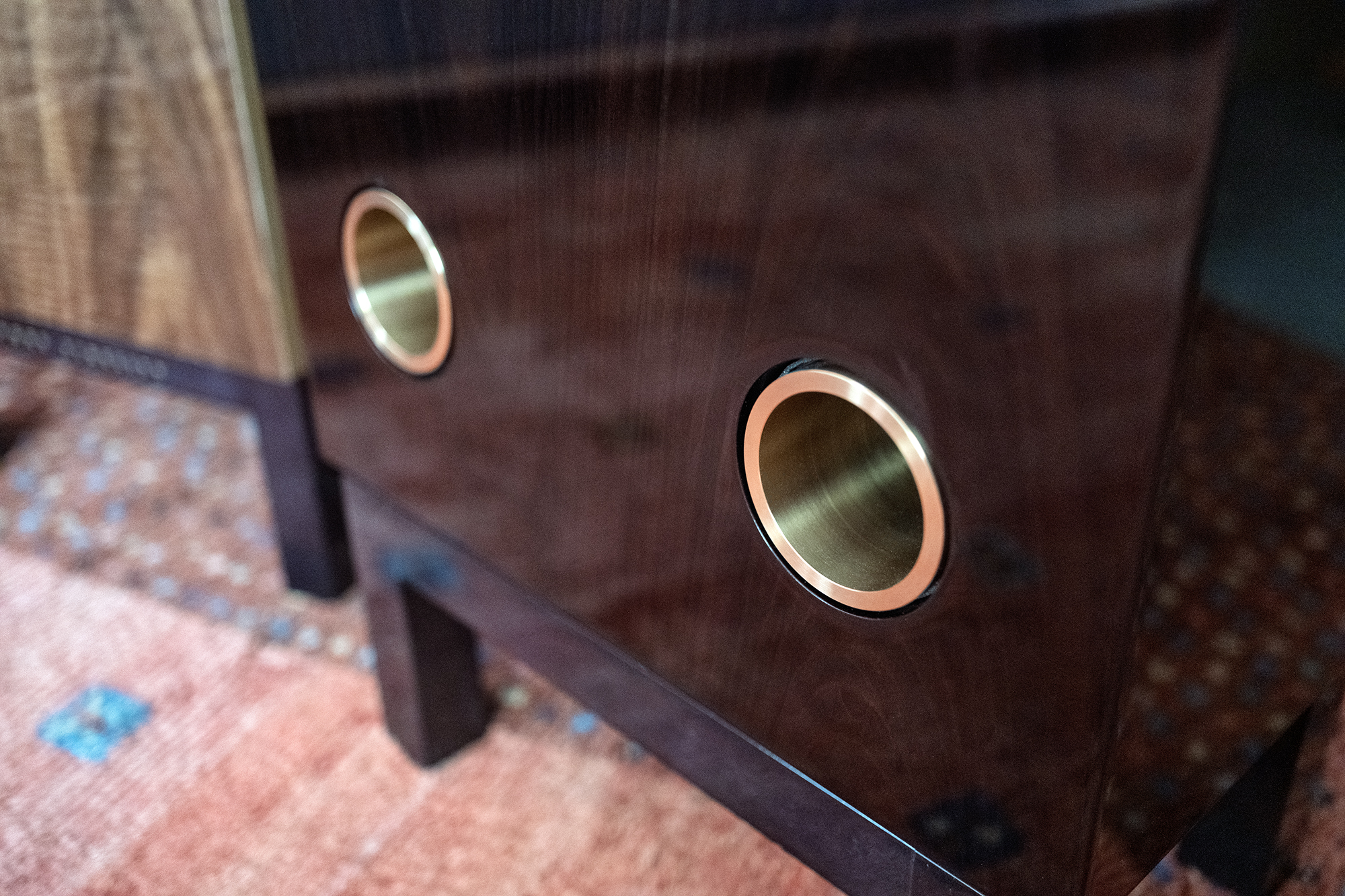
While I don’t typically go here, it’s not difficult to attribute the obvious improvements I hear in the O/Bronze compared to the O/96 to these changes even though the speakers are the same size and look more like twins than cousins which brings me to what is unfortunately kinda common behavior—people who look at a photo of a loudspeaker and think they know how it’s made and how it sounds. Seeing as you can’t see inside where a number of the O/Bronze improvements reside, I chalk this behavior up to magical thinking, as magical as thinking your breath moves clouds.
Nonetheless, lots of people who enjoy typing comments on the internet frequently comment about how a speaker is built and how it sounds from looking at a photo and these same people will argue, or try to argue, with other people who’ve actually heard them and in some cases with the people who designed and built ‘em! Here we move from magical thinking to pure hubris. It’s worth noting the word ‘hubris’ comes from the ancient Greeks who considered hubris a dangerous character flaw capable of provoking the wrath of the gods. I guess those gods aren’t on the internet. And for those who would argue over price, I recommend looking up the meaning of the phrase—minimum order—as it applies to building speakers with custom drivers as a good starting point for just one commonly overlooked major cost of manufacturing life.
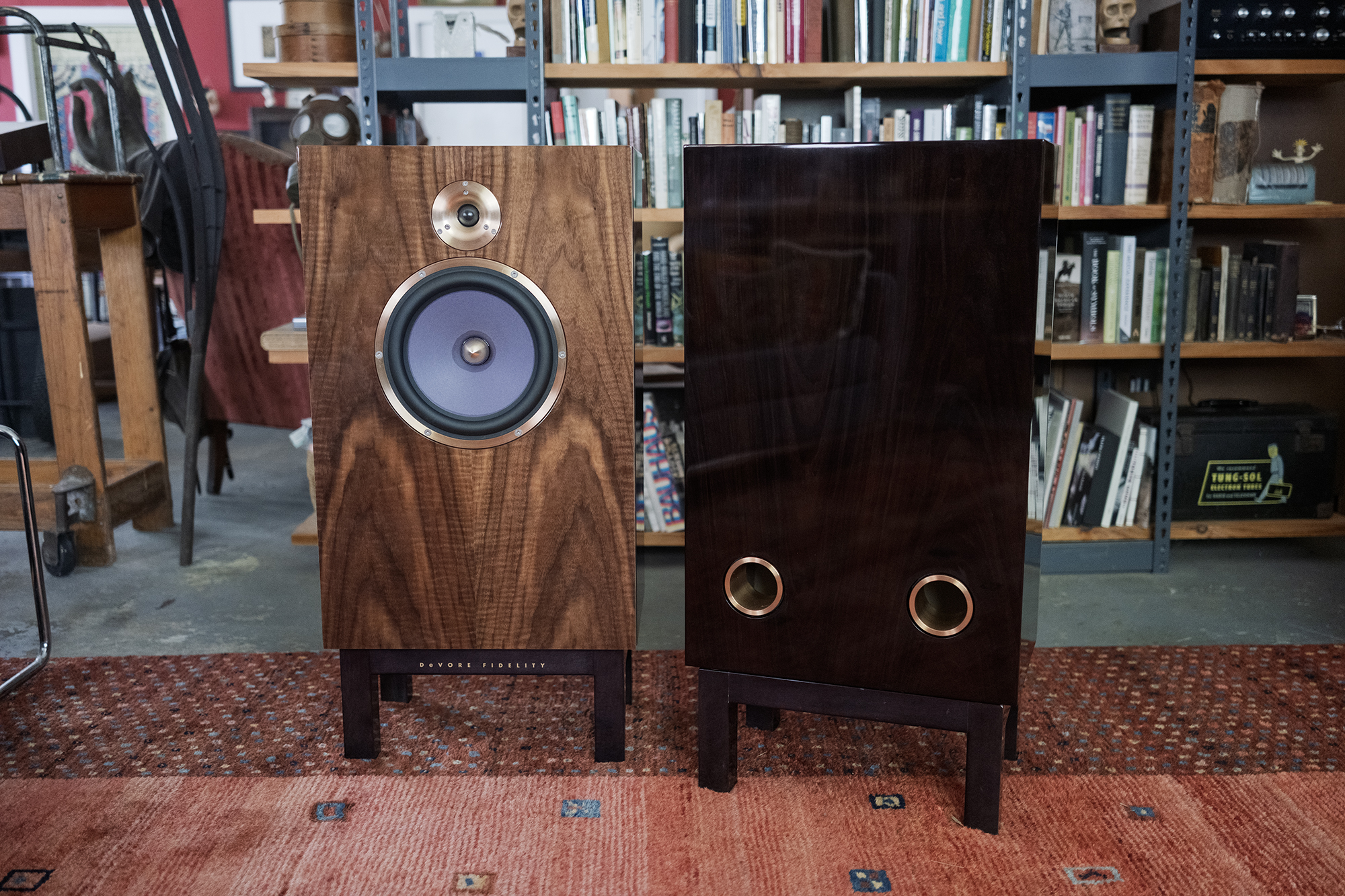
To finish out the numbers, the O/Bronze have a rated sensitivity of 96 dB/W/M with a 12 Ohm impedance, compared to the O/96’s 10 Ohm impedance. Here’s John DeVore from his Manufacturer’s Comment in response to Art Dudley’s review in Stereophile of the O/96 back in 2012 that included measurements from John Atkinson:
The simple answer is that JA measures speakers using a solid-state amp. The classic solid-state amp will output half the wattage into twice the impedance. The AN/E is 4-6 ohms, while the O/96 is 7.5-12 ohms. JA’s measurement amp is putting out nearly twice the amount of wattage into the AN/E as the O/96.
On top of this, tube amplifiers behave differently from solid-state amplifiers, most preferring higher impedances, and some even putting out more power into these higher impedances. This explains why the O/96s played louder in Art’s room than the Audio Notes with the same amps, and why our sensitivity spec is higher than what JA measured.
I include this quote because it concisely explains an interesting issue, speaker impedance and amp performance, and it also goes some way in describing why people say the O/96, and by extension the O/Bronze, were designed with tube amps in mind. That being said, I’ve paired the 0/96 with every kind of amp—tube (single-ended, parallel single-ended, and push pull), solid state, hybrid, and digital—and found that what the O/96 really like is a good sounding amp.

During their 3-month Barn stay, the O/Bronze were paired with a number of amps including three 300B-based stunners—the Qualiton 30B (review) and Audio Note Konzertmeister (review) integrated amps and the Treehaus Audiolab The Preamplifer & 300B-2 SET Amplifier (review)—the hybrid Aesthetix Mimas Integrated Amplifier (review), the Class A/B Wattson Audio Madison Amplifier paired with the matching Wattson Madison LE Streaming DAC (review), and last but not in any way least my newly re-tubed Leben CS600X that relies on four KT77s to produce about 28 Watts of output power. One very friendly feature in the Leben resides around back in the form of a dial for mating its output to the accompanying speakers impedance (4/6/8/16 Ohms).
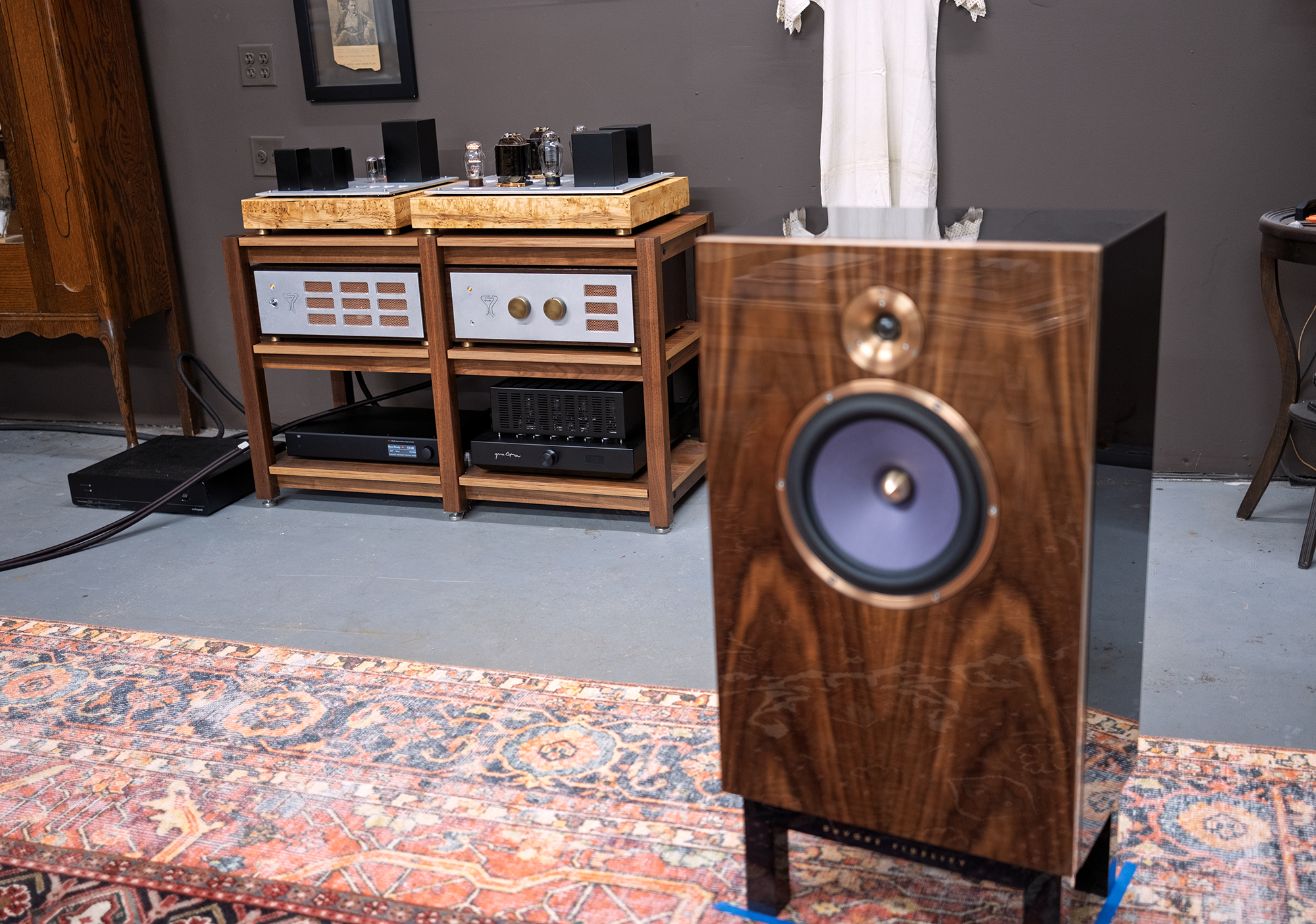
If I had to pick favorites, the Leben CS600X is a great choice, the Audio Note and Treehaus amps both brought out many of the O/Bronze’s outstanding qualities, but my favorite mate for the O/Bronze is, unfortunately, not an amp I’ve reviewed or will review. When John DeVore delivered the O/Bronze he brought along the Komuro K300S Stereo Amplifier—John is also the person behind the Komuro Amplifier Company along with designer Noriyasu Komuro—and we gave it some O/Bronze time using a prototype volume control. A few notes into the first track was all I needed to smile and hear how this is a match made in hifi heaven.

The Komuro 300B amp (more info and my initial impressions), which holds for every Komuro amp I’ve heard and I’ve heard a bunch, delivers pure clean power and absolute control coupled with a shimmering vividness that makes most other amps sound a bit thin and veiled. Why not review it? I decided early on that I would only review separates, amps and preamps, from the same company and there’s no Komuro preamp. Sigh (but there is an integrated in the works).
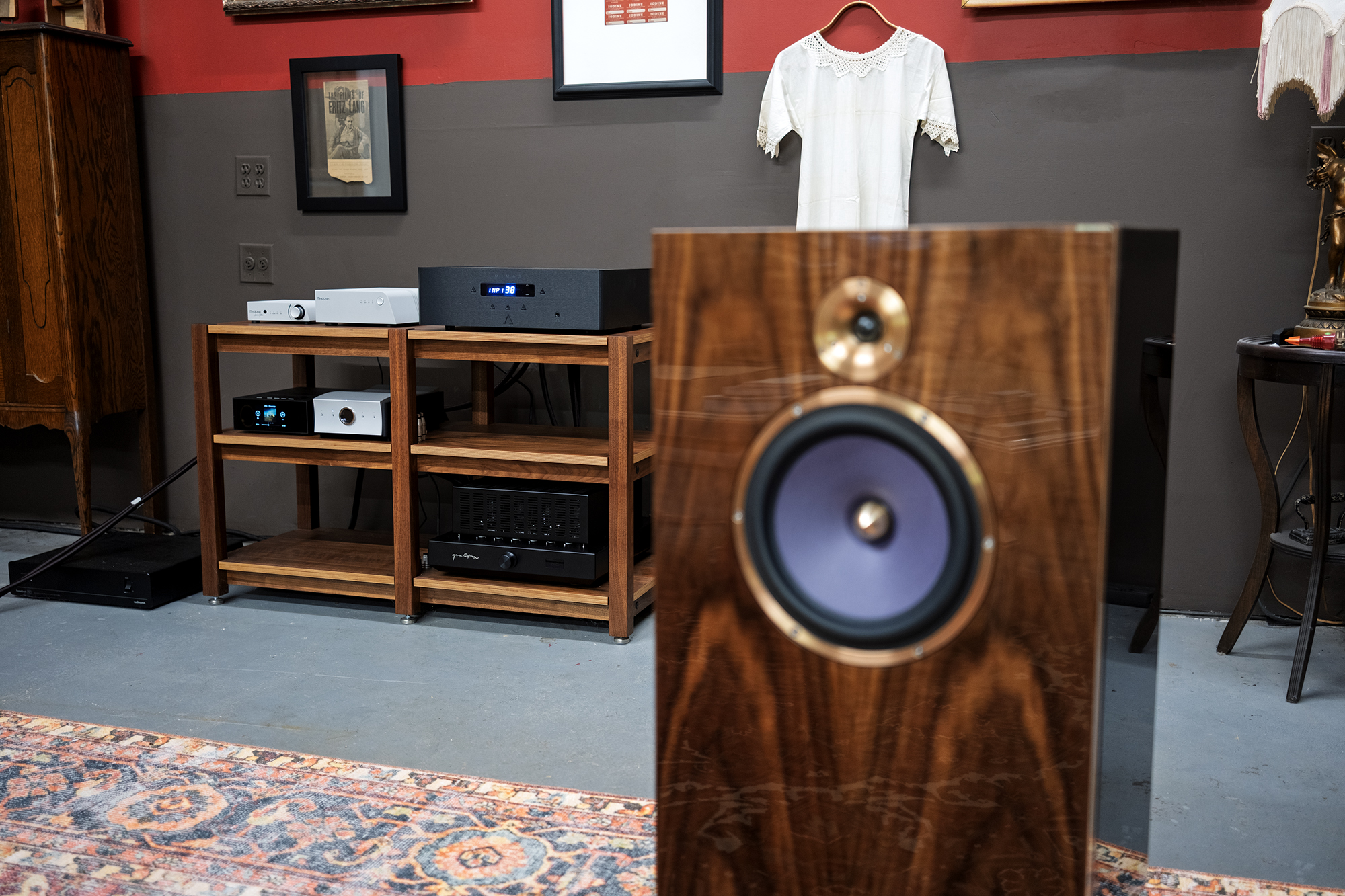
All cabling came courtesy of AudioQuest and included the new Brave Heart speakers cables along with ThunderBird interconnects which connected a number of DACs to the system in play including the recently reviewed Weiss Helios DAC (review), the review totaldac d1-streamer-live (more info)/d1-unity (review) combo, and the Barn resident Auralic ARIES S1 Streaming Processor (review) paired with the Mola Mola Tambaqui (review). All gear was connected to an AudioQuest PowerQuest PQ707 using AQ NRG-Z3 and Blizzard power cables and sat on my Box Furniture MD3S Modular Double-wide 3-shelf Rack on the Barn’s B-Side (see full Barn and system details).
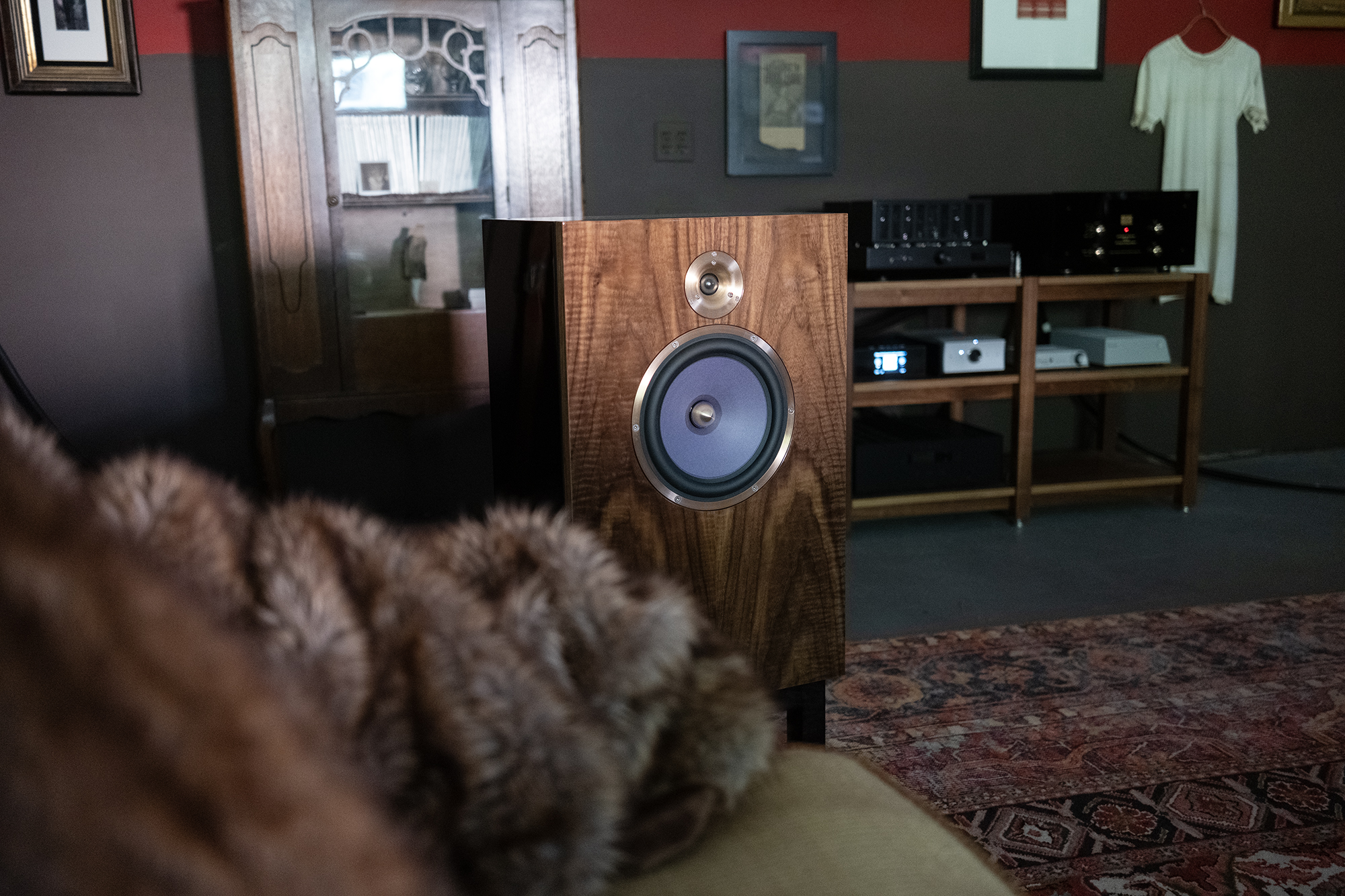
Every loudspeaker is well served by careful setup and the O/Bronze are no different in this regard. But real care allows them to pull off what I hear as the best disappearing act of any speaker I’ve reviewed, a quality they share with the O/96, which is why some people feel they are hard to set up. Which brings me back to singing the praises of pieces of the O/Bronze’s performance—without a doubt, the O/Bronze are capable of recreating a vast and finely detailed sound image that is only limited by what’s been captured on the recording. And this vastness travels in all directions completely detached from the speakers with some sounds coming from so far afield it can be startling. What the heck? I thought that was one of Barn mice scurrying around 5 feet to the right of the right speaker! Damn!
And this vast sound image is filled with perfectly solid sound images that feel as well formed as any I’ve heard. They feel real and come at you from all over the place which can be dizzying and delightful like some kind of sonic hologram perfectly projected in space.
But the real standout quality of the DeVore O/Bronze are the way they reproduce music in its entirety, which I would characterize as stunningly alive. An aside—during their Barn stay, a few people came and went to deliver and/or pick up review gear and on three occasions, with three different people, they all sat in front of the O/Bronze for a listen and all three smiled almost immediately with that “Oh man, that’s just so good.” kinda smile. When a hifi makes you smile, you know it’s doing a great job.
The Audio Note Konzertmeister puts out 8 Watts of power. Eight. But if you heard “Skeleton Key” from Circuit des Yeux’s album Halo on the Inside shake, rattle, and roll the Barn thanks to the O/Bronze on the B-Side I bet you’d smile too. This track goes from mellow to mayhem with a few stops in between but when things get crazy with heavy metal-ish screaming guitar, Bonham-esque manic drums, layers (and layers) of electronic crush with Haley Fohr’s operatic vocals getting nearly Wagnerian over it all, there’s nothing left to do but smile and maybe partake in some headbanging accompanied by air guitar or air drums or both.
The O/Bronze are among the finest reproducers of the unique voice of things that make music, and/or noise, that I’ve had the great pleasure of living with and they endowed every element of every recording I played through them with full voice, dimension, and impact perfectly drawn in space. This level of tactile realness translates into a kind of aural illusion similar to the optical kind where the same image can be seen in two different ways like a vase that’s also two people in profile, a Rubin vase, or a rabbit that’s also a duck. The O/Bronze duality trick is they allow you to sit back and listen in to the music happening in space or, due to the superb level of tactile and timbral rightness, you can nearly melt into the music so it feels like it’s being made inside your head and body. Astoundingly lovely.
According to Roon, I have access to 52 versions of Sly and the Family Stone’s “I Want To Take You Higher” but the original, from their 1969 album Stand!, is my clear favorite for all of its infectious jangly joy and celebration of…music.
… Beat is there to make you move
Sound is there to help you groove
Music’s still flashin’ me
Take your places… I wanna take you higher (Higher)
Wanna take you higher
Baby, baby, baby, light my fire (Woo)
I wanna take you high, high, high, high, high, high, high, high… Boom laka-laka-laka, Boom laka-lak-goon-ka boom
Boom laka-laka-laka indeed which brings me back to that 1” silk dome tweeter and the O/Bronze’s resolving prowess that never bites because it is so damn smooth. Of course when the music calls for bite, like during Freddie Stone’s guitar riffs here, the O/Bronze bite but I’m talking about their lack of etch or overly bright exaggerated upper frequencies that can plague some other speakers that trade paper for more space age and precious materials. And when it comes to Boom, that 10” woofer grooves with controlled and well tuned authority but the more important part of the O/Bronze performance is its seamless portrayal of the entire sonic spectrum with no sense of it’s being reconstructed from various parts like drivers, ports, cabinets, and crossovers. Boom laka-laka-laka, Boom laka-lak-goon-ka boom.
Quade’s album The Foal Tower was released back in April on AD 93 and it remains a favorite. The Bristol-based 4-piece mix violin, vocals, piano, acoustic and electric guitar, bass, ‘hardware’, and drums in a vast space that was captured with care with real emphasis on the unique sounds of each musical element. If you relish the sounds of music, the voices that make a violin a violin and a cello a cello and find real excitement in interplay, timing, tone, and texture, the DeVore O/Bronze do these things as well as any speaker I’ve heard and when it comes to delicacy and dance, the movement of things in air, the DeVore’s outshine most speakers I’ve heard.
What’s more, the ability to connect with music, to get completely lost in the world of an album hour after hour, day after day, month after month, is something I can’t live without when it comes to hifi and the O/Bronze delivered an intoxicating and near dizzying level of connectedness 100% of the time. Making me 100% happy.
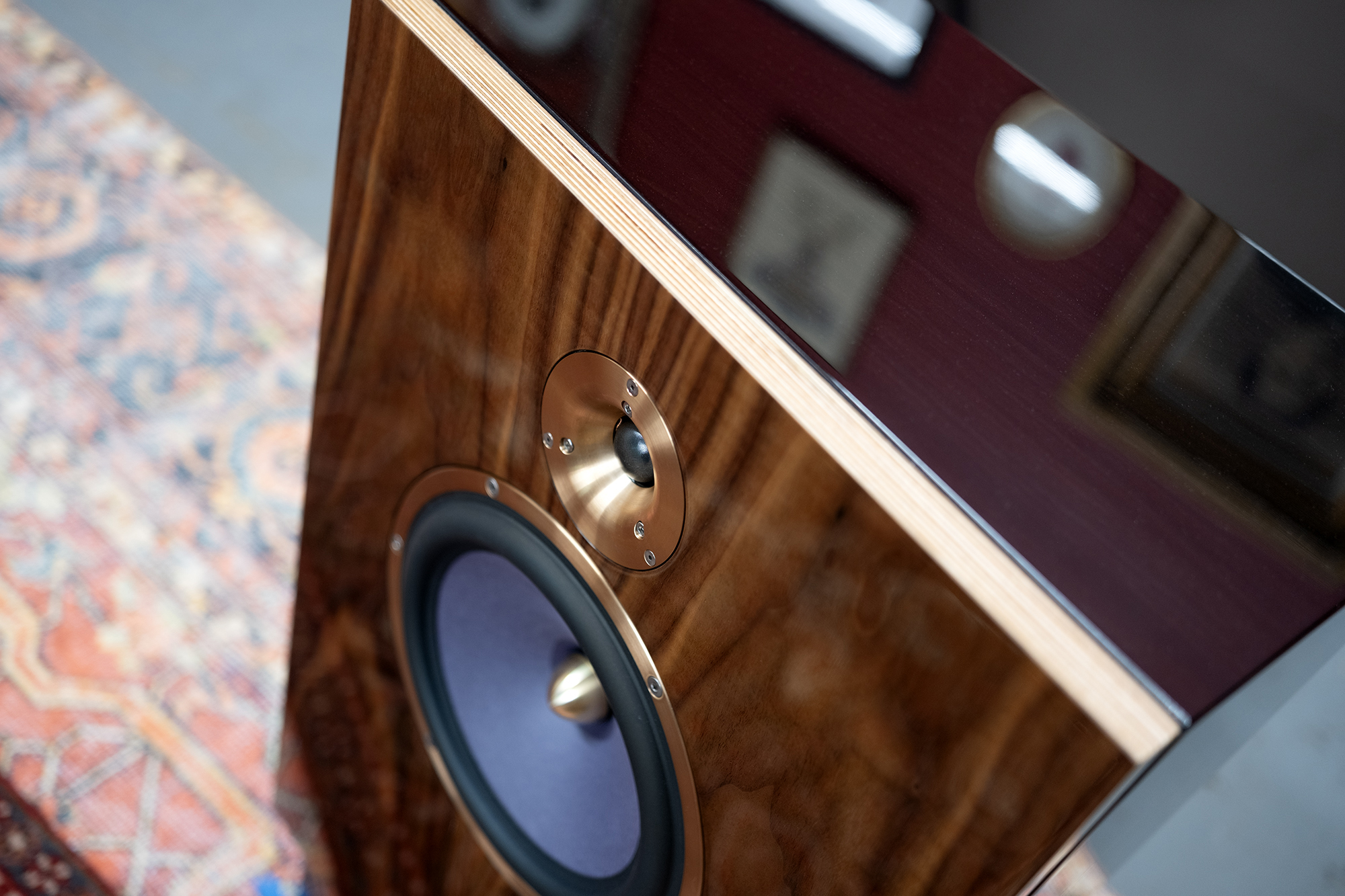
The O/Bronze out finesse most speakers I’ve reviewed around their price and I’d attribute part of that performance to their higher efficiency as they come alive even at low volume with only a few Watts behind ‘em.
While I hate to have to say it, most of the speakers I’ve reviewed that are imported into the US now cost more because of the new US tariffs, which means that some speakers I’ve reviewed in the past that cost a bit less than the O/Bronze, like the Gauder Akustik Capello 100 (review), now cost considerably more. The Capello 100 went from $26,975/pair back in January and are now listed at $39,314/pair, an increase due in part to the new 15% tariffs applied to imports from Germany. If you ask me, that’s not fair trade for anyone, anywhere.
While the Gauder 100s left here back in January, their many strengths do not include the O/Bronze’s delicacy, tone, and texture and I say this with confidence because this is something my O/96 do better than the Capello 100 and the O/96 are bettered by the O/Bronze by no small margin. It’s also worth noting that with the Gauder’s price increase, they now cost more than the Rockport Atria II (review), speakers that checked all of my wish-list-in-a-speaker boxes harder. All to say, if I had to pick my favorite speakers, I’d pick the DeVore O/Bronze and the Rockport Atria II. Hey, the Barn has two sides!
When it comes to classical piano, I tend to prefer stark and sad with a touch of flair which led me to Marie-Luise Hinrichs take on Soler’s Sonatas a few decades ago. This is well ordered music, written by ‘Padre’ Antonio Soler who lived a monastic life working 20-hour days writing more than 500 compositions including 150 keyboard sonatas. This took place in the 18th Century so before the internet, cell phones, and social media. Cough. The Sonatas were mostly written for clavichord but I love, love, Hinrichs rich interpretations for piano. Call me a romantic.
John DeVore has talked about how, as a child, he would lay under his mother’s piano while she played Bach offering a physical and all-consuming sound. As you might imagine, growing up in a house with a classical pianist makes one intimately familiar with not only the music practiced and played, but its sounds in various settings from underneath to the concert hall. All to say the O/Bronze play piano as well as Hinrichs on this rich and rewarding recording.
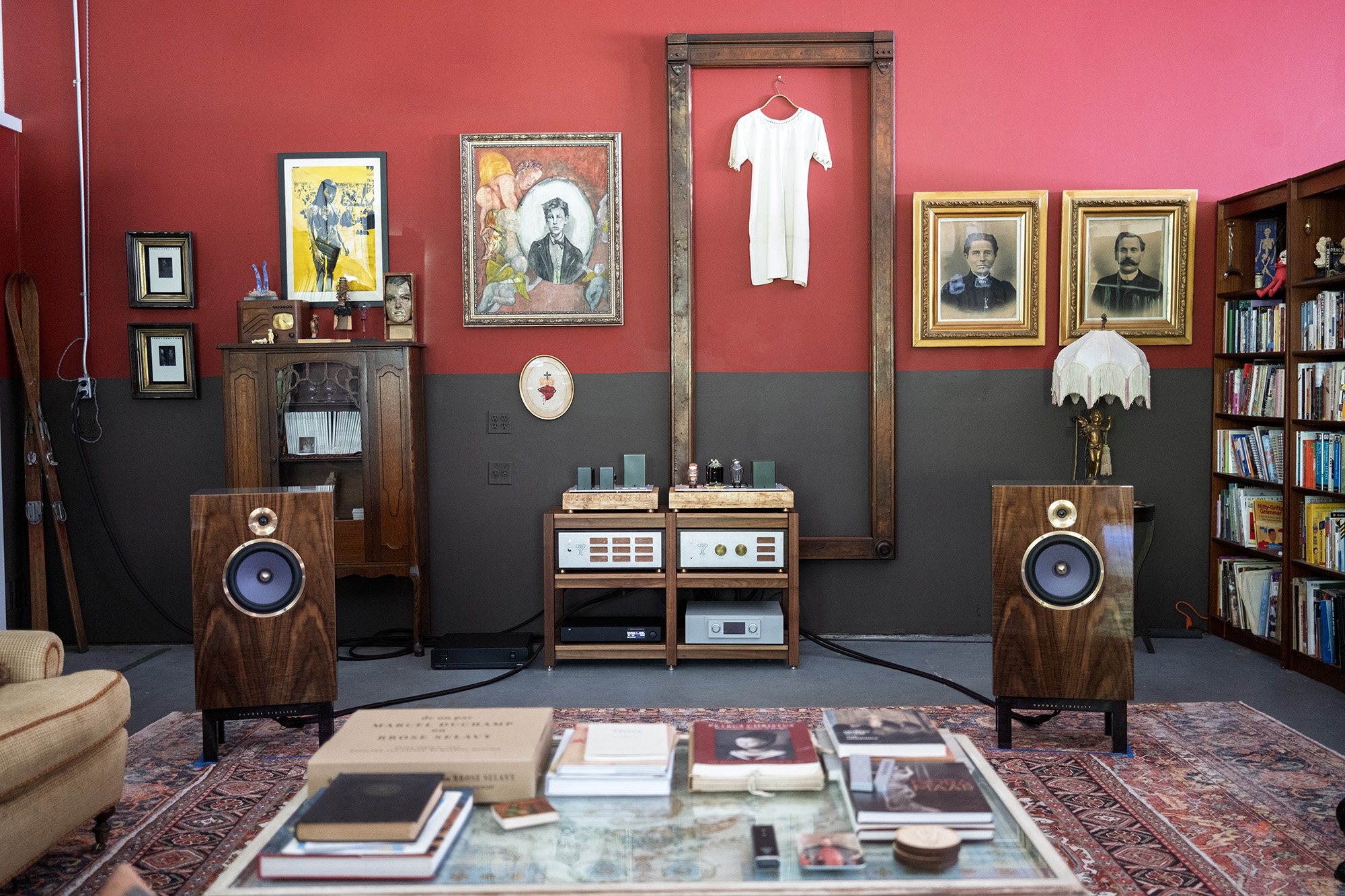
One issue that came up over and over during this 3-month review period was my inability to listen quick, to hit a few favorite tracks and then run over to my desk where I’d type fresh impressions, my typical review writing routine. And I failed at this seemingly simple task because no matter the music, I was drawn in and always wanted to hear more. I am, when all is said and done, still an album-length listener even more so when music is as delightful and fanciful as Hinrich’s Soler or Tom Wait’s Alice or FKA twigs Magdalene or Bob Dylan’s World Gone Wrong or Lucrecia Dalt’s A Danger to Ourselves and on and on and on.
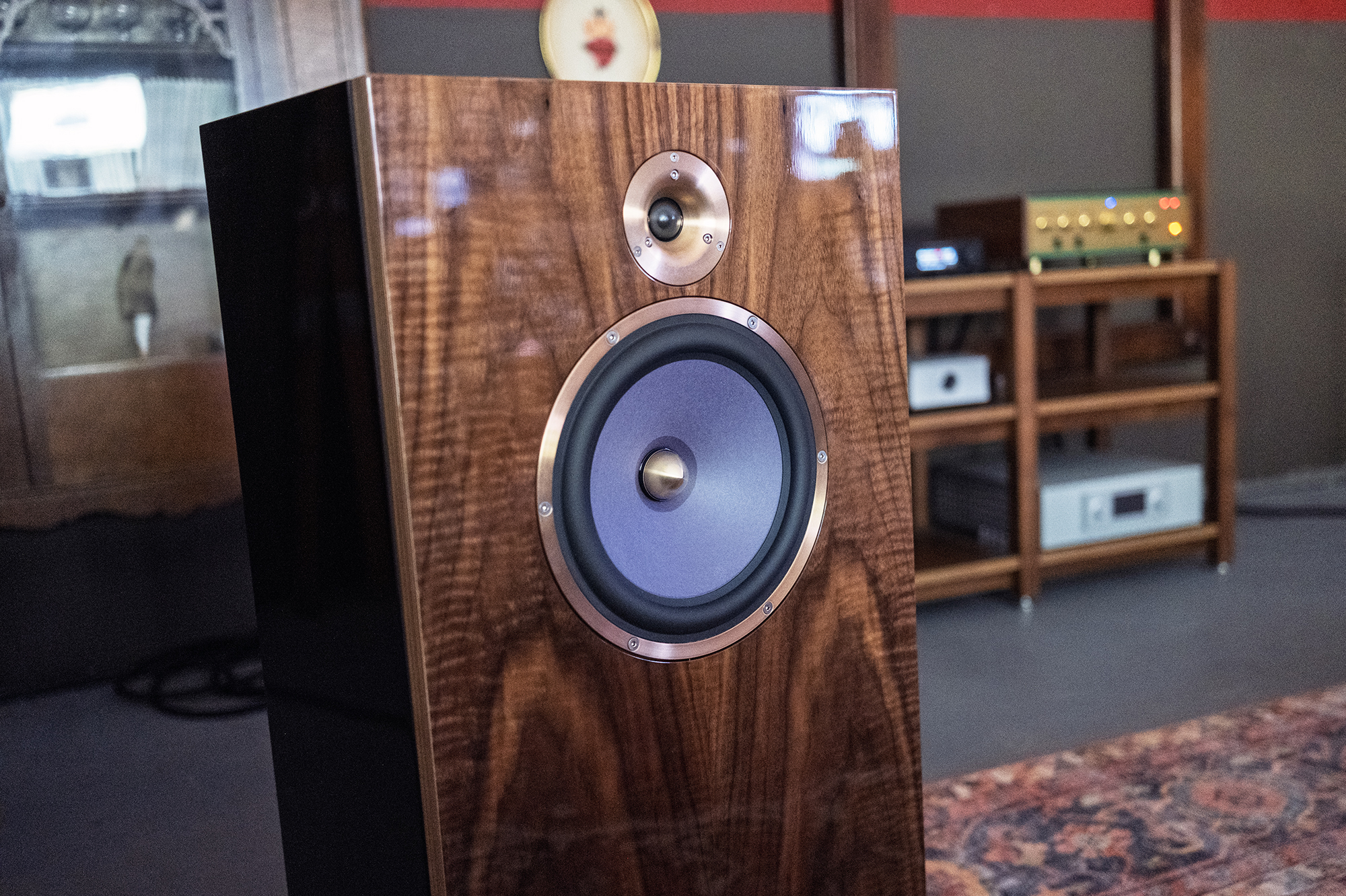
I admit I knew going into this review I was in for something special. I’ve heard the DeVore Fidelity O/Bronze on a number of occasions, I’ve owned the DeVore O/96 for years, and I’ve owned other DeVore speakers throughout the years dating back to the 2000s. Even with all that advance notice, I was not prepared for the level of sheer musical satisfaction that living with the O/Bronze consistency delivered for these past 3 months.
Beyond the play-by-play, beyond the picking apart of sonic details, the O/Bronze are among the most engrossing loudspeakers I’ve had the great pleasure of living with, placing music intimately close, me inside of it, or it inside of me. I’m talking about a real human connection to music that takes hold of one’s senses, thoughts, and feelings by focusing them completely on the music in play well beyond sounds, digging deep into our shared humanity.
DeVore Fidelity O/Bronze Loudspeakers
Price: $30,000/pair
Manufacturer Website: DeVore Fidelity
Specifications
Frequency Response: 26Hz-23kHz
Sensitivity: 96 dB/W/M
Impedance: 12 ohms
Dimensions: 12″d x 18″w x 35.5″h including stands
Finish Options: American Black Walnut, Lace Walnut, or Custom

